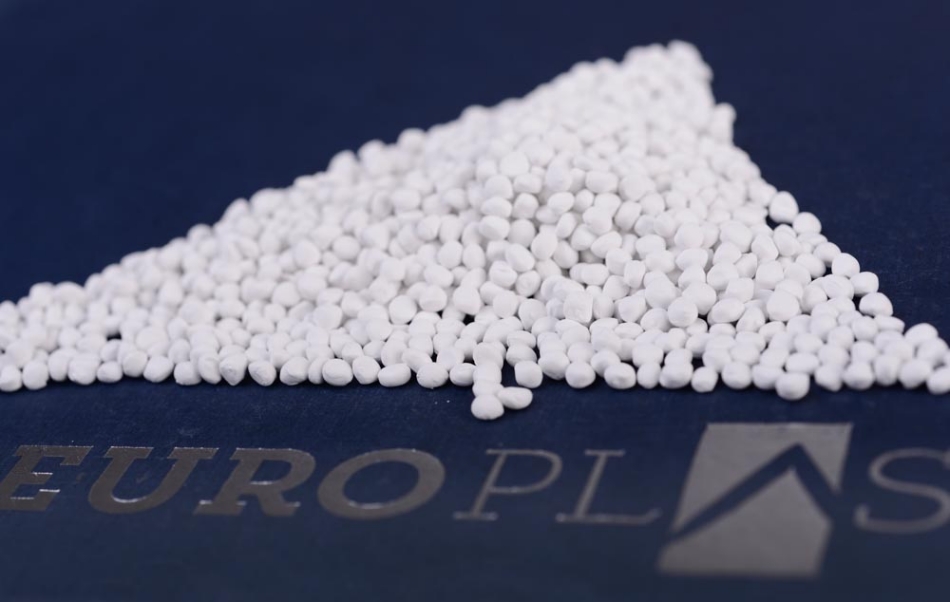 EuP Calcium Carbonate Filler
EuP Calcium Carbonate Filler
Calcium carbonate filler provides not only a decrease in the material cost but also modifies some physical properties. It is used as an additive in plastic and helps reduce surface resistance, opacity and surface gloss.
1. Polypropylene for Plastics
Polypropylene is a homogeneous material with similar corrosion resistance and does not require any additional treatment from internal or external coating to protect against corrosion.
Polypropylene devices are lighter than other materials used to make polypropylene, making them easier to use, install, and move. The lower the weight, the cheaper the structural columns and concrete floors will be. Meanwhile, more than a third of the community collects plastics beyond bottles.
Advantages of polypropylene include low density, stiffness and impact resistance, chemical and heat resistance, low environmental impact, excellent water vapour barrier properties, hot filling and resilience, and microwave.
Low concentrations of polypropylene reduce environmental pollution. Polypropylene has less solid waste than PET, PS and PVC. Polypropylene and high-density polyethene (HDPE) have less CO2 equivalents than PET, PS and PVC. Recycled polypropylene is used in many different applications.
2. CaCO3 filler effects on mechanical properties
PP composites can have a significant impact on the mechanical properties of automotive applications, depending on the mineral fillers with different particle shapes and sizes.
Polypropylene with suitable functional mineral fillers or additives provides high rigidity and impact resistance for applications. There are many research reports on polypropylene with various coated unpaired fillers.
Researchers used high-temperature dihydroxylation to study the effect of nanocomposites (without calcium carbonate) on the mechanical properties of polypropylene. According to their analysis, the deflection temperature of the flexible module and PP nanocomposites is higher than that of Virgin PP..
Micron-size powder-filled materials are widely used in the plastics industry. Based on detailed research investigation, the most effective mechanical properties, such as tensile strength, impact resistance and flexible modulus of the polymer, are influenced by the addition of filler.
The flexible module increases as the aspect ratio of the filler increases. The higher aspect ratio and higher modulus of the particles result in increased combined stiffness.
The main conclusions of the previous investigations are:
- The mechanical properties of the PP / filler compounds depend on the uniform dispersion of the mineral particles.
- Micro-sized particles are ideal for achieving high impact and tensile strength.
- The stiffness of the compounds increases with a higher load and a higher aspect ratio.
- High aspect ratio fillers create high stresses in the polymer near the edges of the filler.
- Low aspect ratio inserts give moderate stiffness but increase impact strength.
Processing of polymers by radiation or radiation affects the physical, thermal, and mechanical properties of the polymer. PP / LLDPE mixtures with different monomers are highly influenced by the emission of the electron beam and its geological and thermal properties.
After the introduction of radiation, LLDPE / PP has become more effective for crosslinking or branching. The size and shape of mineral particles can affect mechanical properties such as stiffness, tensile strength, and impact force.
In recent years, a variety of nanomaterials with broad specifications have been used as filler materials. Due to their large surface area, nanomaterials combined with polymers are suitable for forming nanocomposites.
Based on various research investigations, microparticle sizes have limited influence on Young's modulus of composition, but with nano-sized particles, the modulus can be increased. Nanocomposites show good mechanical properties in compounds with micro-sized particles.
3. CaCO3 filler for PP
CaCO3 is used widely in the plastics industry with various particle sizes to meet the demands of resins.
The main reason to use this mineral is cost-effective and economic.
Furthermore, if the particle size is carefully controlled, the calcium carbonate will help to increase the impact force, lengthening at the break, the significant impact resistance of the izod and flexible modulus (stiffness).
Similarly, calcium carbonate is the preferred filler in many industries and has advantages over other commercial fillers.
The addition of calcium carbonate loaded with calcium carbonate offers an excellent balance between stiffness and impact resistance and can improve toughness with polypropylene resins.
Calcium carbonate is often used as a functional filler for polypropylene due to its thermodynamic stability.
The main advantage of calcium carbonates when used as fillers is the ability to control the size and shape of the particles, and they are easier to disperse during mixing than other polymers used in the paper and plastics.
Calcium carbonate is a safe and abundant mineral that is inexpensive to use in polymers. The carbonization process is useful for the synthesis of calcium carbonate polymorphs with a variety of morphologies. In particular, it is economical, ecological and energy-saving compared to other conventional methods.
Overall, the calcium carbonate raw materials for the polypropylene composites must achieve other economic and environmental benefits.